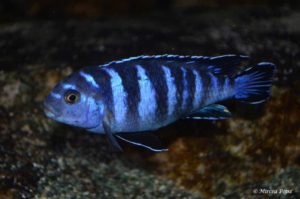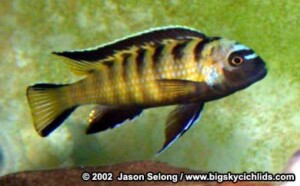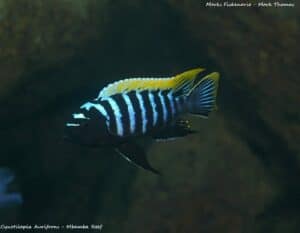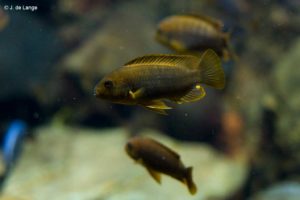Mbuna
Mbuna
The cichlids from Lake Malawi are generally divided into a number of groups, one of which is the Mbuna. Books usually distinguish between three groups, but enthusiasts divide these groups further:
- Mbuna (rock dwellers)
- Utaka (subdivided into predators and free swimmers)
- Emperor cichlids
Mbuna
The name Mbuna comes from the local Tonga language and means “rock fish.” It will therefore come as no surprise that these fish mainly inhabit the rocks and coasts of Lake Malawi. This is in contrast to the Utaka and Emperor Cichlids, which prefer the open water and sandy plains of the lake.
Depending on who you ask, there are around 200 described species and a number of undescribed species of Mbuna. These species are all members of the Cichlidae family and belong to the following genera:
- Abactochromis
- Chindongo
- Cyathochromis
- Cynotilapia
- Genyochromis
- Gephyrochromis
- Iodotropheus
- Labeotropheus
- Labidochromis
- Metriaclima or Maylandia
- Melanochromis
- Petrotilapia
- Pseudotropheus
- Tropheops
Behavior
In general, Mbuna are tough, fierce, and very colorful fish that do not grow very large, reaching a maximum length of about 15 centimeters. The males often occupy a territory where they try to attract females for mating. Because they defend their territory relatively fiercely, combining them with species from other areas is not recommended.
Diet
Some Mbuna are herbivorous, while others are omnivorous. Most Mbuna have in common that their stomach/intestine length is much longer than that of carnivorous Malawi cichlids. Fatter live/frozen food such as tubifex, mosquito larvae, etc. takes too long to travel through the stomach/intestinal tract and can cause Malawi bloat. You can therefore feed them granules, flake food, etc., as long as it also contains green food such as spirulina. A little frozen food is also fine now and then, just not too much and not too often. I would not give tubifex at all.
The aquarium
A typical aquarium for Mbuna starts at a length of about 150 centimeters. The layout consists of a large number of rocks with crevices, caves, and gaps left open. The male Mbuna seek a territory here and the females can hide among the rocks if necessary.
Plants are generally not used or used very little in a Mbuna aquarium. The fish nibble at the leaves and pull at them, and unless anchored to the rocks, they do not stay in the bottom for long. If you want to use plants, choose tough varieties such as Valisneria or Anubias species.
It is recommended to place rounded sand on the bottom. The Mbuna will use this to rinse their gills from time to time. Filter sand size 0.4 to 0.8 is widely used, which has the advantage that all grains are roughly the same size, reducing the chance of bottom rot.
Breeding Mbuna
Mbuna cichlids are fairly easy to breed. The male tries to lure the female into his territory with trembling movements. Between the rocks or on the sand, the male and female circle each other, with the male sliding his anal fin with egg spots over the sand. The female lays an egg, turns around, and takes the egg into her mouth. As soon as the female bites the male’s egg spots, she thinks they are her own eggs. The male releases them and fertilizes the eggs already in her mouth.
The eggs of these Malawi cichlids hatch within 3 to 4 days, but the female keeps the young in her mouth for a total of about 3 weeks. After this period, she releases the young between the rocks, after which they have to fend for themselves.
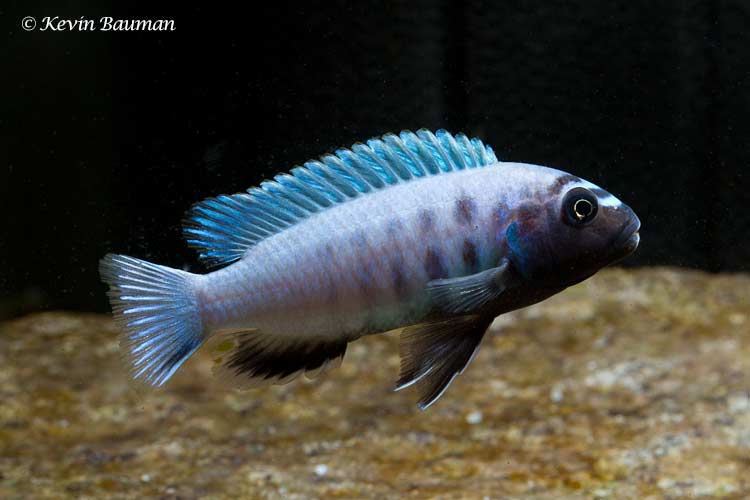
Showing 1–12 of 58 results
Showing 1–12 of 58 results


